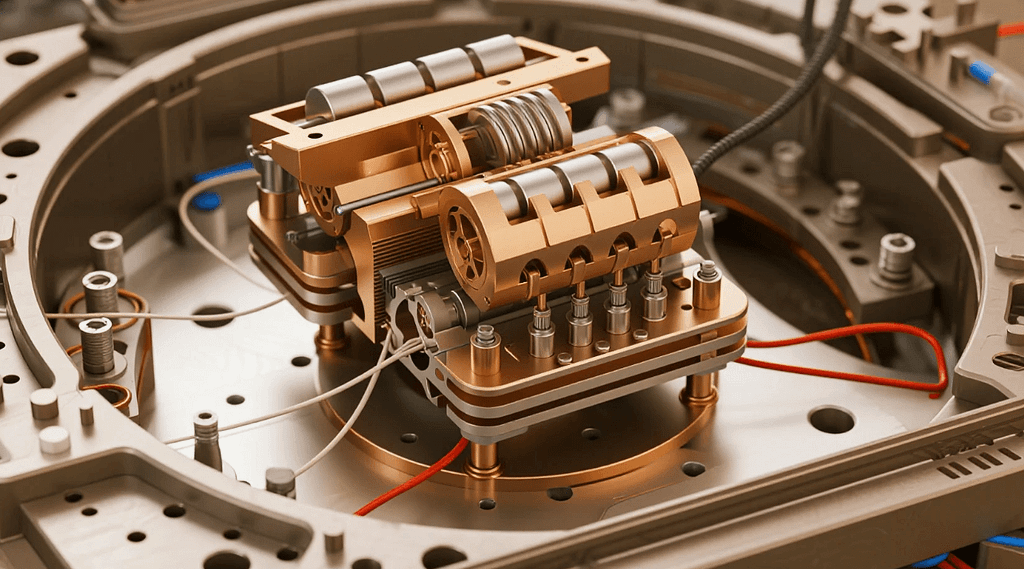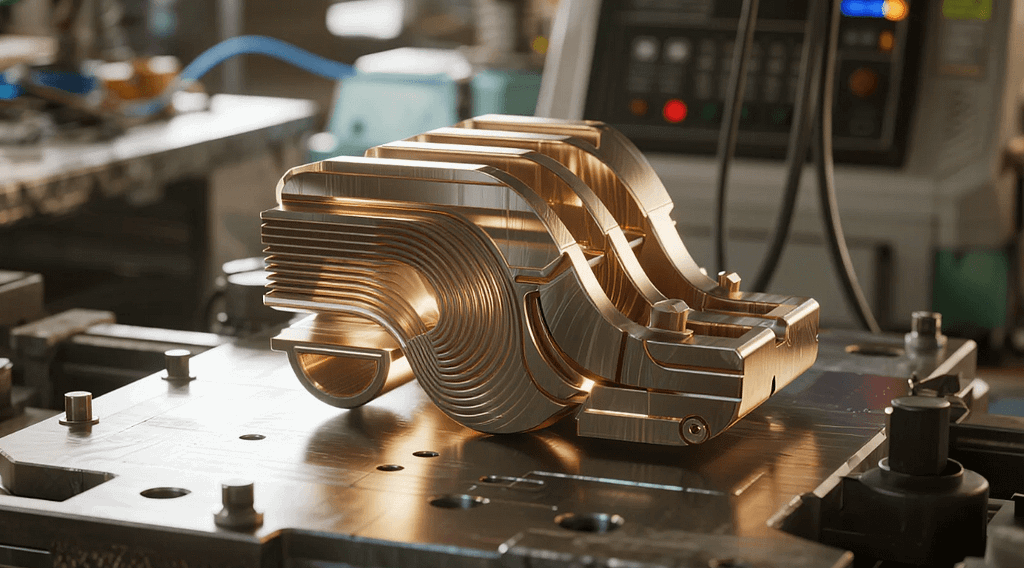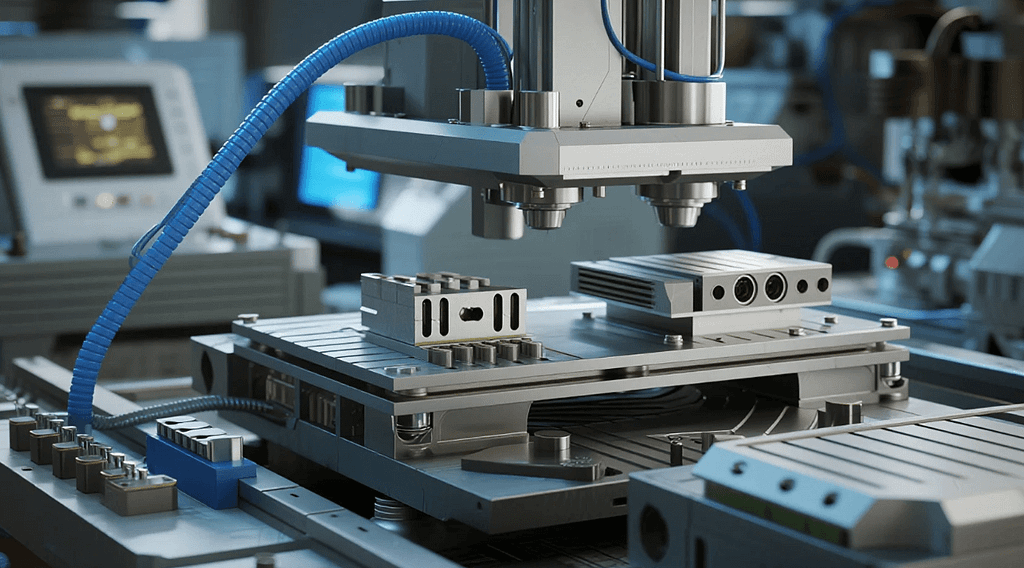In the dynamic realm of modern engineering, metal additive manufacturing has emerged as a groundbreaking technology, fundamentally redefining how complex metal components are conceived and produced. Often referred to as industrial 3D printing for metals, this transformative process offers unparalleled design freedom and efficiency across diverse sectors, playing a particularly crucial role in the creation of highly precise industrial models. This article delves into the intricacies of metal additive manufacturing, exploring its core principles, distinctive advantages, and profound impact on businesses seeking advanced industrial model services. We’ll discover how this innovative approach delivers tangible value, enabling users to bring previously impossible designs to life and accelerate their product development cycles with unprecedented speed and accuracy.
What is Metal Additive Manufacturing?
At its heart, metal additive manufacturing (AM) involves building three-dimensional metal objects layer by layer from digital design data, typically using metal powder or wire as raw material. This contrasts sharply with traditional subtractive manufacturing methods, which remove material from a larger block to achieve the desired shape. By adding material only where needed, AM minimizes waste, allows for highly intricate geometries, and facilitates the creation of lightweight, high-performance parts. This revolutionary approach has ushered in a new era of design possibilities and manufacturing capabilities.
The Foundational Technologies of Metal AM
Several distinct technologies fall under the umbrella of metal additive manufacturing, each employing different methods to fuse metal particles and build parts. Understanding these variations helps illustrate the versatility and breadth of applications for industrial model creation.
Powder Bed Fusion (PBF)
Powder Bed Fusion is arguably the most common and precise category of metal additive manufacturing. These processes involve a precise energy source, usually a laser or electron beam, selectively melting thin layers of metal powder within a build chamber.
- Selective Laser Melting (SLM) / Direct Metal Laser Sintering (DMLS): These techniques utilize high-powered lasers to fully melt and fuse fine metal powder particles, creating fully dense and strong parts. SLM/DMLS excels at producing highly intricate geometries, complex internal lattice structures, and parts with excellent mechanical properties. For industrial models, this means creating lightweight yet robust prototypes for aerospace components, medical implants, or complex fluidic systems where internal flow paths are critical for validation.
- Electron Beam Melting (EBM): EBM employs an electron beam as the heat source, operating in a vacuum environment. This method is particularly well-suited for reactive materials like titanium and nickel alloys, often yielding parts with superior material properties, reduced residual stress, and high purity. For industrial models requiring exceptional material integrity, high-temperature resistance, or made from specialized aerospace alloys, EBM offers a compelling solution.

Directed Energy Deposition (DED)
DED processes involve a nozzle that simultaneously deposits metal powder or wire and melts it with a laser, electron beam, or plasma arc. This approach builds parts by adding material to an existing substrate or repairing damaged components. While often used for larger parts or repairs, DED can also create functional prototypes or add specific features to existing industrial models where material deposition is required.
Binder Jetting
Binder Jetting involves depositing a liquid binding agent onto layers of metal powder, creating a “green” (unfired) part. This green part then undergoes a sintering process in a furnace to achieve full density and mechanical properties. Binder jetting offers high production speeds and can be more cost-effective for larger batches or for parts where intricate internal structures are less critical than overall form and scale. For larger industrial models or multiple iterations, binder jetting can provide an efficient path to creating near-net-shape prototypes for validation.
The Transformative Advantages of Metal Additive Manufacturing for Industrial Models
For businesses seeking precision industrial model services, leveraging metal additive manufacturing offers a compelling suite of benefits that often surpass the capabilities of traditional manufacturing techniques. These advantages directly translate into enhanced design innovation, accelerated development cycles, and superior model quality.
Unprecedented Design Freedom and Complexity
One of the most revolutionary aspects of metal additive manufacturing is its capacity to create geometries previously considered impossible with conventional methods. Designers can now incorporate highly intricate internal channels, complex lattice structures, and organic, biomimetic shapes. This is invaluable for industrial models where lightweighting, optimized fluid dynamics, or advanced thermal management are critical design considerations. For instance, a model of a cooling manifold can accurately reproduce internal flow paths for precise fluid simulations, while a lightweight structural bracket model can feature complex internal trusses for realistic stress analysis.
Rapid Prototyping and Accelerated Iteration
The speed at which metal additive manufacturing can produce intricate and functional metal parts fundamentally changes the prototyping landscape. Design engineers can quickly move from digital concept to physical model, allowing for rapid iteration and refinement. This accelerated cycle enables more design revisions, leading to a more optimized and robust final product. For industrial model users, this means faster validation of concepts, quicker feedback loops, and a significant reduction in time to market for new products. It allows for testing multiple design hypotheses in a fraction of the time.
Functional Integration and Part Consolidation
Metal additive manufacturing empowers designers to consolidate multiple components into a single, integrated part. Instead of assembling several smaller pieces, a designer can create one complex component with all necessary features built-in. This simplifies supply chains, reduces assembly costs, and can improve overall performance by eliminating potential weak points or connections. For industrial models, this capability facilitates the creation of more robust and accurate representations of integrated systems, enhancing their value for functional testing and demonstration purposes.
Lightweighting and Performance Optimization
By leveraging advanced design principles like topology optimization and internal lattice structures, metal additive manufacturing can produce parts that are significantly lighter than their conventionally manufactured counterparts, often while maintaining or even improving structural integrity. This is particularly advantageous for industrial models in weight-sensitive industries such as aerospace, defense, and automotive, where reduced weight directly translates to improved performance and efficiency. A lightweight yet strong model allows for more realistic physical testing and validation.
Customization and On-Demand Manufacturing
For highly specialized industrial models, where only a few units are needed, metal additive manufacturing offers a cost-effective and efficient solution. It eliminates the need for expensive and time-consuming tooling, making it ideal for low-volume production runs, customized prototypes, or unique models tailored to specific testing requirements. This flexibility is a major advantage for companies requiring bespoke or highly specialized components for their development process.

Metal Additive Manufacturing for Precision Industrial Model Service Users
For businesses that rely on accurate and high-fidelity industrial models for their product development and validation processes, partnering with a service provider proficient in metal additive manufacturing unlocks a new dimension of capabilities.
Bringing Impossible Designs to Life
Service users are no longer constrained by traditional manufacturing limitations. They can push the boundaries of design, exploring innovative geometries, internal features, and integrated functionalities that were once theoretical or cost-prohibitive to produce. This empowers them to develop truly advanced and competitive products.
Expedited Product Development
The ability to quickly acquire complex, functional metal prototypes significantly shortens the overall product development timeline. This allows companies to refine their designs faster, conduct more thorough testing, and ultimately bring their innovations to market more rapidly, gaining a crucial competitive edge.
Superior Model Fidelity and Performance
For service users, metal additive manufacturing ensures high-fidelity models that accurately represent the final product’s form, fit, and critical functional aspects. This level of accuracy is paramount for reliable testing, confident decision-making, and ensuring that prototypes are truly indicative of the end-product’s capabilities.
Risk Reduction and Cost Savings
By enabling early and accurate physical validation of complex designs, metal additive manufacturing helps identify potential issues sooner. This proactive approach significantly reduces the risk of costly design flaws surfacing later in the production cycle, minimizing expensive retooling or redesign efforts.
The Future Trajectory of Metal Additive Manufacturing and Industrial Models
The landscape of metal additive manufacturing continues its rapid evolution, driven by advancements in materials science, machine intelligence, and process optimization. We can anticipate further developments in new alloy capabilities, improved surface finish control, and even more sophisticated multi-material printing. Integration with artificial intelligence for generative design and real-time process monitoring will further enhance efficiency and precision. For industrial models, these innovations mean even faster turnaround times, the ability to work with an expanding range of high-performance materials, and the creation of models with previously unattainable levels of detail and functional accuracy. The commitment to responsible manufacturing practices, including sustainability and waste reduction, will continue to guide these transformative advancements.
Conclusion
Metal additive manufacturing is undeniably a transformative force in the world of product development and beyond. For businesses involved in creating or utilizing precision industrial models, this technology offers an unparalleled opportunity to innovate, accelerate, and optimize. Its remarkable capacity for design freedom, rapid prototyping, and the production of highly functional, complex metal components makes it an indispensable tool for today’s most demanding engineering challenges. By partnering with experts in metal additive manufacturing, companies can unlock new design possibilities, streamline their development processes, and ultimately bring superior, groundbreaking products to market faster.
FAQ
Q1: What are the primary advantages of metal additive manufacturing for industrial models?
A1: The main benefits include creating highly complex geometries, enabling rapid prototyping and multiple design iterations, integrating multiple parts into a single component, achieving significant lightweighting, and facilitating cost-effective customization and low-volume production.
Q2: What types of metals can be used in metal additive manufacturing?
A2: A wide range of metals are commonly used, including stainless steels (e.g., 316L, 17-4 PH), titanium alloys (e.g., Ti-6Al-4V), aluminum alloys (e.g., AlSi10Mg), nickel-based superalloys (e.g., Inconel), and cobalt-chrome.
Q3: How does metal additive manufacturing contribute to product development speed?
Q3: By eliminating the need for traditional tooling and enabling direct printing from digital designs, metal additive manufacturing significantly reduces lead times for complex parts, allowing for faster prototyping, testing, and iteration cycles. This accelerates the overall product development timeline.
Q4: Can metal additive manufactured models be used for functional testing?
Q4: Yes. Parts produced by many metal additive manufacturing processes, particularly Powder Bed Fusion, achieve high density and mechanical properties comparable to wrought metals, making them suitable for rigorous functional, structural, and performance testing.
Q5: Is metal additive manufacturing cost-effective for all types of industrial models?
Q5: It is highly cost-effective for complex geometries, low-volume production runs, or highly customized industrial models where traditional manufacturing methods would require expensive tooling or multiple assembly steps. For very simple or extremely high-volume parts, traditional methods might still be more economical.
Q6: What industries most benefit from metal additive manufacturing for their models?
Q6: Industries requiring high-performance, lightweight, or complex metal parts benefit greatly. These include aerospace (engine components, brackets), medical (implants, surgical instruments), automotive (prototypes, specialized tooling), and defense.
Q7: What is the difference between “powder bed fusion” and “directed energy deposition” in metal additive manufacturing?
Q7: Powder Bed Fusion (e.g., SLM, EBM) selectively melts layers of powdered metal in a bed. Directed Energy Deposition (DED) uses a nozzle to deposit and simultaneously melt metal powder or wire onto a surface, often used for repair or adding features to existing parts.
